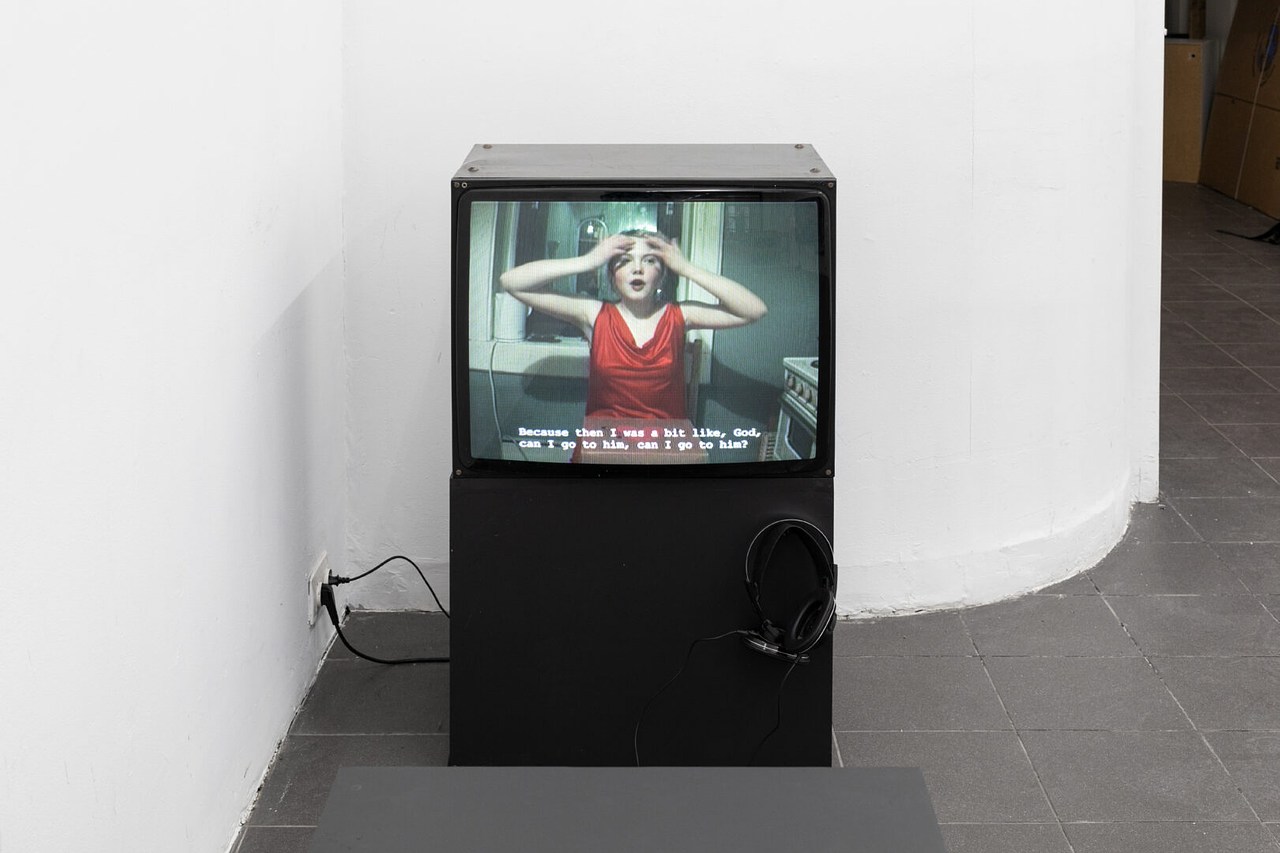
© » KADIST
John Menick
The theme of the end of the world, of the last man on earth, recurs in our literary and cinematographic culture and in our imaginary: “we had this dream before, the dream that we’re alone.” In The Secret Life of Things , the narrator presents himself as an enthusiast and expert on films announcing the end of the world and those staging someone waking up to discover that they are the only survivor on earth. Like in some works by Mario Garcia Torres (like The Transparencies of the Non-Act , a slide projection about the artist Oscar Neuestern, Kadist Collection), the artist lends his discourse to a stranger. Mastering the montage, he intersperses a monologue and images.

© » KADIST
John Houck
Houck’s Peg and John was made as part of a series of photographic works that capture objects from the artist’s childhood. In this image, drafting materials (pencils, compasses, and protractors) are laid out next to shotgun shell casings. Presenting these objects in juxtaposition but without commentary, Houck offers a partial but interesting glimpse into his own biography.

© » KADIST
John Baldessari
In One Must , an image of a pair of scissors, accompanied by the words of work’s title, poses an ominous question about the relationship between the image and the text. The otherwise banal scissors become suggestively violent in relation to the text, which was originally the title of a print in Francisco de Goya’s Disasters of War series. However, Baldessari is less interested in the logical relationships between text and image than he is with the conceptual leaps that the viewer makes with the limited information provided.

© » KADIST
John Gutmann
Gutmann’s photographs Untitled Nob Hill and From the North Tower of the Golden Gate Bridge are some of the oldest pieces in the Kadist Collection and serve as historical anchors for many of the more recent works. Distinctly modernist in style, the photos depict two of San Francisco’s most recognizable sites—the affluent neighborhood of Nob Hill and the iconic Golden Gate Bridge—through extremely estranged angles and balanced compositions. Moreover, these two images are representative of Gutmann’s work inasmuch as they epitomize two of the photographer’s visual obsessions: the automobile and the city of San Francisco.

© » KADIST
John McCracken
Though not strictly representational, some objects in Untitled (1962) are recognizable: a flower, an egg, a foot. The arrows and directional lines suggest movement, but the forms they point to intertwine, prohibiting a straightforward reading. The shapes are as illustrative as a Rorschach inkblot; in their confounding, simple indeterminacy, they depict nothing and everything at once.

© » KADIST
John Isaacs
A child and dreamer my whole life long (broken tree) (2004) is a sculpture made of filler, wire, copper, oil paint, and wood depicting a tree just at it’s moment of breaking into half – one part alive with foliage and blooming branches and the other the crisp of the break exposed, with the trunk adhered solidly to a plinth. The sculpture appears to speak quite bluntly about Isaac’s own sense of bleak pessimism when exposing a severed tree, the universe’s sacred sign of life and birth. Through the perfect rendering of this encapsulated moment, Isaacs demonstrates the strength of the sculptural artifact and his interest in failure and fragility.

© » KADIST
John Houck
Untitled #242 is part of Houck’s Aggregates Series, which uses digital tools to manipulate chosen sets and pairs of colors, creating colorful index sheets, bathed in colors and lines. Houck transforms these simple outputs physically, folding, lighting, photographing, and re-printing them, only to fold, photograph, and re-print again. An MFA graduate from UCLA, John Houck works primarily in the medium of photography and specializes in still-life vignettes.

© » KADIST
John Morris
Drawing & Print (Drawing & Print)
Untitled was part of the 2002 exhibition “Drawings for the Austrian School” held at the D’Amelio Terras gallery in New York. For this occasion, Morris created a language of his own by using acrylic, ink, graphite and ballpoint pen on paper. The exhibition title comes from Morris’ interest in the early 20th century Austrian economist Joseph Schumpeter, a one time Austrian Minister of Finance, bank director, and economics professor who taught in Europe and at Harvard University.

© » KADIST
John Baldessari
Arms & Legs (Specif. Elbows & Knees), etc. : Arm (with Bottle) belongs to Baldessari’s most recent series of paintings in which the artist brings together photographic, painted, and three-dimensional elements, to juxtapose unlikely body fragments such as noses and ears, elbows and knees, or eyebrows and foreheads.

© » KADIST
John Baldessari
Drawing & Print (Drawing & Print)
The voids in Baldessari’s painted photographs are simultaneously positive and negative spaces, both additive and subtractive. In Person with Pillow: Desire, Lust, Fate , a woman’s facial expression is obscured by such void, leaving only her posture to suggest her emotional state. The two images stacked above the woman can be read as comic-style thought bubbles, intimating that she has lust, desire, and fate on her mind.

© » KADIST
John Houck
John Houck’s multi-layered photographic compositions immortalize nostalgic objects from the artist’s childhood, manipulated in the studio and in post-production into unreal still-life arrangements. Stamp -X, Stamp -Y consists of a careful collage of uneven scraps of paper. On their versos, these fragments of blue, white, and manila papers hold the artist’s childhood stamp collection; turned as they are, these shards of envelope become planes of colors that Houck manipulates in a vaguely grid-like fashion.

© » KADIST
John Houck
Baby Shoes, Never Worn is part of photographer John Houck’s series of restrained still-life photographs capturing objects from his childhood. The image depicts a box, addressed to the artist’s mother, that once contained—it can be assumed—baby shoes. Houck layers the photograph with multiple exposures, lending an uneasy tripling effect to the static object.

© » KADIST
John Gerrard
Flag (Thames) 2016 depicts a small section of the Thames River—one that is adjacent to the Palace of Westminster in London—as an algorithmic representation on an LED panel. The river color is vividly represented with reflections of buildings along the riverbank, including Big Ben. At the center of the scene sits a simulated gasoline spill.

© » KADIST
John Houck
John Houck’s brown- , sienna- and golden-toned composition, Untitled #185, 65, 535 combinations of a 2×2 grid, 16 colors , features densely packed lines of color moving diagonally across the creased page. Houck uses a series of self-designed software programs to create these intricate grids of color and line, riffing off of Sol LeWitt, perhaps, in a digital age. Houck takes the output of these programs and then manipulates them manually, creasing the pages of the index print, and then re-photographing them.

© » KADIST
J. John Priola
Priola pays particular attention to otherwise unnoticed details in the cityscape, a quality that not only recurs throughout his oeuvre, but which also places his work in line with a strong tradition of California documentary photography. Close-ups and attention to detail reveal something different: a portrait of what is usually discarded or missing, like unassuming weep holes in Alameda Street or minuscule weeds making their way up through the pavement in Chestnut Street . But these details are subtle to the point of being conceptual; from afar both images appear to be monochromes.

© » KADIST
John Wood & Paul Harrison
Board has a deadpan quality worthy of Buster Keaton. With this work, Wood and Harrison create an intimate, formally structured mise-en-scène in which they use their own bodies in interaction with a wooden board. The artists elaborate an orchestration of the comic consequences of inertia, gravity, and the law of falling bodies in this low-tech physics experiment.

© » KADIST
John Lucas and Claudia Rankine
Drawing & Print (Drawing & Print)
Historically, blondeness has been a signifier for desirability and beauty, speaking to “purity” — the purity of whiteness — like no other bodily attribute except, perhaps, blue eyes. In the twenty-first century, blondeness is the look desired by American presidents, pop stars, rappers, television announcers, Hollywood celebrities, the boy next door, and some Asian Americans, African Americans, white Americans, Arab Americans, and LatinX Americans. The desirability of blonde hair has no genre boundaries, no pronoun limitation, and no class limit.

© » KADIST
John Wood and Paul Harrison
One of John Wood and Paul Harrison’s earliest works, Device features Harrison performing a series of actions, assisted by the titular ‘devices’, that use physics to force his body into unusual and uncomfortable positions. Maintaining his signature deadpan expression throughout the video, in one scene Harrison is thrusted into the air by a slowly inflating balloon until only his feet are visible in the frame, while in another he levitates in diving position with the help of a pulley system. Wood uses his body and specially-designed props created by the artist duo to explore the space of the screen in hilarious, and sometimes clumsy or violent, ways.

© » KADIST
John Wood and Paul Harrison
3-Legged is an early video work by John Wood and Paul Harrison in which they appear with their legs tied together (as one would do in a three-legged race). Wood and Harrison stand together in a narrow alcove built into their studio, dressed similarly in grey long sleeve shirts and jeans. Facing a tennis ball machine that is almost completely out of view, with only the barrel of the machine protruding from the bottom of the frame, they hobble back and forth across the alcove attempting to avoid the tennis balls launching toward them, with varying degrees of success.

© » KADIST
Chris Huen Sin-Kan
Contrast to the bustling and unrelenting experience of a city such as Hong Kong, Chris Huen Sin Kan paints the tranquil interiors of his apartment, where he leads a modest and almost hermit-like life. He does not try to capture a particular moment, but rather the simultaneously changes that occur before him in time, exploring the nuances of light and reflections and recording movements in his apartment, his dog’s behavior and reactions, the way his plant change over time, all in an attempt to find a visual expression of his cognitive experience. Doodood and John are the names of his dog and the plant.

© » KADIST
Thomas Kilpper
Drawing & Print (Drawing & Print)
These two images come from the series called “State of Control” which Kilpper made in the building formerly occupied by the Stasi in Berlin. As a symbol of the past there could be none more powerful than this. By carving into its floor, Kilpper laid bare its history by making images of its occupants and political figures associated with that period of history.

© » KADIST
Joachim Koester
Physical and mental exploration have been founding elements in Joachim Koester’s research for several years. While exploration was mainly a matter of geography during the 19th century, the 20th century brought the mental exploration of our unconscious, triggered by the discovery of psychoanalysis. Koester is interested in documenting minor events, forgotten by History, in order to reintroduce them into collective memory.

© » KADIST
Corey McCorkle
Corey McCorkle’s 2016 installation Pendulum is developed around the Cavendish family and their role in importing bananas to Europe. Cavendish bananas were named after William Cavendish, the 6th Duke of Devonshire. In 1834, Cavendish received a shipment of bananas from Mauritius, and developed these bananas in the greenhouses of Chatsworth House with his gardener Sir Joseph Paxton, and were later given to missionary John Williams to take to Samoa.

© » KADIST
Mario Garcia Torres
Mario Garcia Torres imagines cinematic devices to replay stories occasionally forgotten by Conceptual art. For him, this is a way of rethinking the tradition in a more personal way, to have a grip on events of recent history and examine them with a curiosity, both critical and sensual. The artist emphasizes the fact that new ideas and meanings may arise from these archaeological narratives.

© » KADIST
Claudia Joskowicz
Los rastreadores is a two-channel video by Claudia Joskowicz narrating the story of a fictitious drug lord, Ernesto Suarez, whose character is based on the well-known Bolivian drug dealer, Roberto Suárez. In the video, Suarez returns home from prison and survives a massacre that takes place at his home in Bolivia. Told in four chapters, the story is inspired by John Ford’s American Western classic film The Searchers (1956), this work similarly focuses on the politicized atmosphere of Bolivian history, searching for cues of race and alienation.

© » KADIST
Ming Wong
Making Chinatown (2012) is a remake of Roman Polanski’s 1974 classic neo-noir film Chinatown . According to Wong, the latter is a “textbook” of Hollywood filmmaking . In Ming’s version, he plays all four main characters portrayed originally by Jack Nicholson, Faye Dunaway, John Huston, and Belinda Palmer, shooting against a backdrop of a film set reproduced as wallpaper in a gallery space.

© » KADIST
Keren Cytter
“Untitled” is inspired by the movie “Opening Night” by John Cassavetes with Gena Rowlands playing the role of a fallen woman, anguished by her distressed life. In the film, we witness the drama of a blended family, heightened by adultery and finally murder. For the film’s decor, Cytter, instead of filming a domestic interior, uses a theater stage, a place of representation by excellence.

© » KADIST
Charles Gaines
To make his series Shadows (1980), Gaines subjected 20 potted plants to a uniform procedure. Each is pictured four times: a photograph of the plant, a photograph of its shadow, a drawing of the plant, and a drawing of its shadow. Instead of lending structure to disparate entities, this system serves a counterintuitive purpose, dissolving the object.
John Houck
- year born: 1977
- gender: male
- nationality: American
- home town: South Dakota
Wong Wai Yin
Wong Wai Yin is an interdisciplinary artist who experiments with a variety of media ranging from painting, sculpture, collage, performance, video, installations and photography...
John Baldessari
- location: Los Angeles, California
- year born: 1931
- gender: male
- nationality: American
- home town: National City, California
Kota Ezawa
- location: San Francisco, California
- year born: 1969
- gender: male
- nationality: German
- home town: Cologne, Germany
John Wood and Paul Harrison
John Wood and Paul Harrison have been working collaboratively since 1993, producing single screen and installation-based video works...
Goldin+Senneby
Since 2004, the artists Goldin+Senneby, comprised of Simon Goldin and Jakob Senneby, have been working on an ongoing performative and rhizomatic project...
Larry Bell
- location: Venice, California
- year born: 1939
- gender: male
- nationality: American
- home town: Chicago, Illinois
Thomas Kilpper
- location: Stuttgart, Deutschland
- year born: 1956
- gender: male
- nationality: German
John Wood & Paul Harrison
John Wood and Paul Harrison have been working collaboratively since 1993 producing single screen and installation based video works.Their work investigates the relationship between the human figure and architecture, developed through short form video with particular emphasis on actions being formulated and resolved within a given duration...
John Isaacs
John Isaacs’ work encompasses many different media, though much of it has origins in sculpture...
Mario Garcia Torres
- location: Mexico City, Mexico
- year born: 1975
- gender: male
- nationality: Mexican
- home town: Monclova, Mexico
Maaike Schoorel
Based on photographs and domestic environments, Maaike Schoorel’s paintings are charged with an atmosphere of melancholy and loss...
Chris Huen Sin-Kan
Chris Huen Sin-Kan (b...
John Gerrard
For more than two decades, John Gerrard has produced media work that has harnessed the emergent technologies of programming languages and gaming engines, and transmuted them into landscapes and portraits of ever increasing intricacy and autonomy...
Miljohn Ruperto
- location: Los Angeles, California
- year born: 1973
- gender: male
- nationality: Filipino and Danish
- home town: Manila, Philippines
John Gutmann
- year born: 1905
- gender: male
- nationality: German-American
Sara Cwynar
Cwyner is both related to a photo conceptual tradition of photography from Vancouver as well as to a new school of photography working with digital manipulation, scanners, stock photography and the notion of photography after image making, both of which are represented in the Kadist collection via artists such as Arabella Campbell, Ron Terada, Tim Lee, Rodney Graham, Ian Wallace from Vancouver and artists such as Chris Wiley, Lucas Blalock, Erin Shirreff or John Houck, who recently have explored the idea of photography beyond image making....
John McCracken
- year born: 1934
- gender: male
- nationality: American
- home town: Berkeley, California
Keren Cytter
Keren Cytter makes films who appropriate and transform different registers, from film noir, melodrama, documentary and television series...
Ming Wong
- location: Berlin, Germany
- year born: 1971
- gender: male
- nationality: Singaporean
- home town: Singapore
Orion Shepherd
Orion Shepherd is a Los Angeles based artist working across drawing, collage, painting and sculpture...
John Menick
Rather like the narrator in the video belonging to the Kadist collection, The secret life of things, the artist John Menick is a ‘professional spectator’...
American Artist
American Artist makes experimental work in the form of sculpture, video, and software that comments on histories of race, technology and forms of knowledge production...
Charles Gaines
- location: Los Angeles, California
- year born: 1944
- gender: male
- nationality: American
- home town: Charleston, South Carolina
Scott Reeder
- location: Chicago, Illinois; Raleigh, NC
- year born: 1970
- gender: male
- nationality: American
- home town: Milwaukee, Wisconsin
Allan Sekula
- location: Los Angeles, California
- year born: 1951
- gender: male
- nationality: American
- home town: Erie, Pennsylvania
Joachim Koester
- year born: 1962
- gender: male
- nationality: Danish
- home town: Copenhagen, Denmark
Edward Kienholz
- location: Los Angeles, California
- year born: 1927
- gender: male
- nationality: American
- home town: Fairfield, Washington
John Lucas and Claudia Rankine
John Lucas and Claudia Rankine are interdisciplinary thinkers and makers committed to exploring the nuances of race and power in our daily lives...

© » WHITEHOT
about 20 months ago (02/12/2024)
Chris Welch and William Cummins at the Gallery of Caribbean Art advertise donate post your art opening recent articles cities contact about article index podcast main February 2024 "The Best Art In The World" "The Best Art In The World" February 2024 Chris Welch and William Cummins at the Gallery of Caribbean Art Chris Welch, Duppies series 29, watercolor on paper, 14 x 11 inches By JOHN DRURY , January 2024 You may, or you very well may not, believe in the spirit world...

© » HYPERALLERGIC
about 20 months ago (02/05/2024)
John Steuart Curry: Weathering the Storm Skip to content John Steuart Curry, “Tornado Over Kansas” (1929), oil on canvas, (46 1/4 × 60 3/8 inches) “Tornado Over Kansas” (1929) is an iconic image in United States pop culture, but few people know its creator, John Steuart Curry, whose paintings of picturesque landscapes, communal gatherings, and devastating natural disasters have defined the country’s perceptions of the American Midwest since the late 1920s...
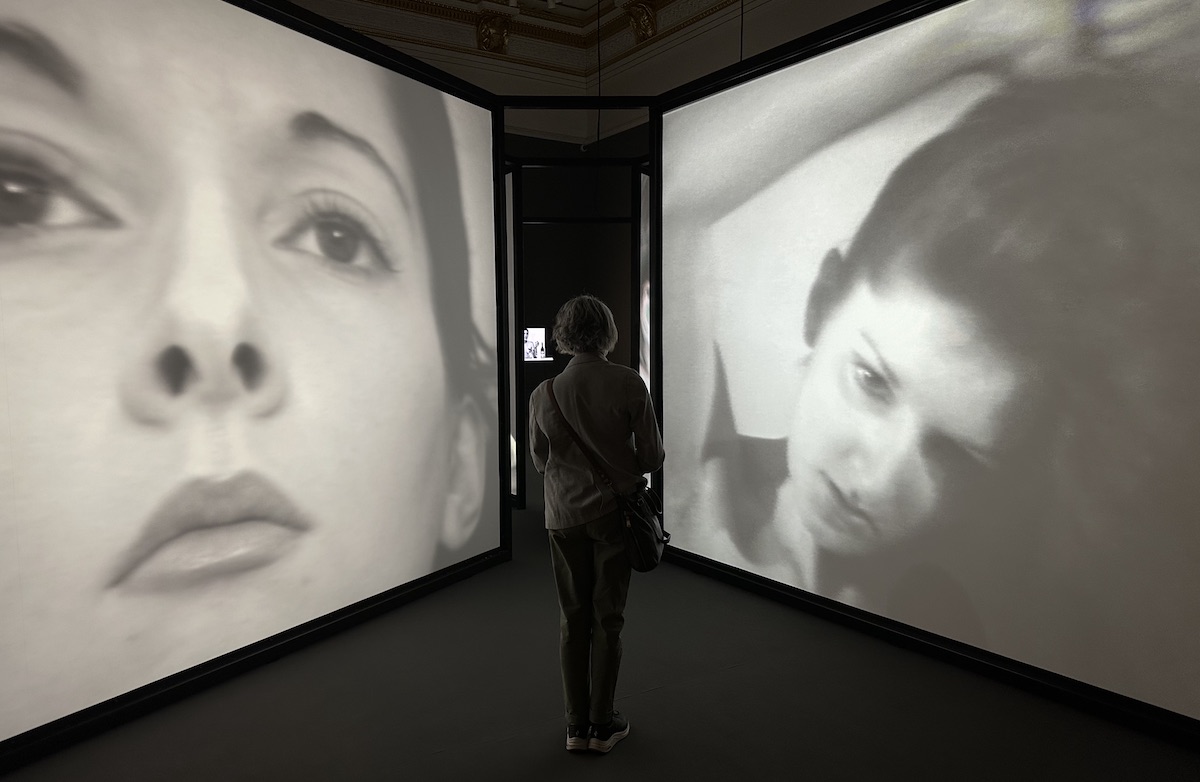
© » ARTLYST
about 21 months ago (01/24/2024)
John Bonafede, an artist and re-performer/participant in Marina Abramović's renowned 2010 retrospective at the Museum of Modern Art sues.....

© » SLASH PARIS
about 21 months ago (01/08/2024)
Seyni Awa Camara — John McAllister — Sculpting Earth, Painting Sensations — Galerie Almine Rech — Exposition — Slash Paris Connexion Newsletter Twitter Facebook Seyni Awa Camara — John McAllister — Sculpting Earth, Painting Sensations — Galerie Almine Rech — Exposition — Slash Paris Français English Accueil Événements Artistes Lieux Magazine Vidéos Retour Précédent Suivant Seyni Awa Camara — John McAllister — Sculpting Earth, Painting Sensations Exposition Installations, peinture, sculpture Seyni Awa Camara, John McAllister, Sculpting Earth, Painting Sensations, 2023 Galerie Almine Rech — Photographie : DR Seyni Awa Camara — John McAllister Sculpting Earth, Painting Sensations Encore 13 jours : 11 janvier → 24 février 2024 Almine Rech présente Sculpting Earth, Painting Sensations, une exposition créant un dialogue unique entre les artistes Seyni Awa Camara et John McAllister...

© » SLASH PARIS
about 21 months ago (01/08/2024)
Seyni Awa Camara — John McAllister — Sculpting Earth, Painting Sensations — Almine Rech Gallery — Exhibition — Slash Paris Login Newsletter Twitter Facebook Seyni Awa Camara — John McAllister — Sculpting Earth, Painting Sensations — Almine Rech Gallery — Exhibition — Slash Paris English Français Home Events Artists Venues Magazine Videos Back Previous Next Seyni Awa Camara — John McAllister — Sculpting Earth, Painting Sensations Exhibition Installation, painting, sculpture Seyni Awa Camara, John McAllister, Sculpting Earth, Painting Sensations, 2023 Galerie Almine Rech — Photographie : DR Seyni Awa Camara — John McAllister Sculpting Earth, Painting Sensations Ends in 13 days: January 11 → February 24, 2024 Almine Rech is pleased to present Sculpting Earth, Painting Sensations, an exhibition that creates a unique dialogue between the artists Seyni Awa Camara and John McAllister...
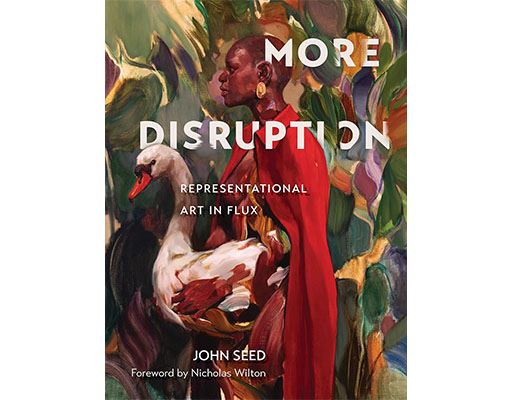
© » MUTUALART
about 22 months ago (12/18/2023)
John Seed’s More Disruption offers some highlights but is largely a representation of groveling artistic superficiality...

© » TWOCOATSOFPAINT
about 22 months ago (12/14/2023)
Coherent divergence at John Molloy Gallery – Two Coats of Paint Carter Hodgkin, Dither 12, cut paper collage with acrylic paint, inkjet & protective varnish on canvas over panel, 24 x 24 inches Contributed by Jonathan Stevenson / “Mutability,” a thoughtfully conceived and curated group show at John Molloy Gallery, by its title contemplates the elastic aesthetic capacities of painting, drawing, and sculpture...

© » THE GUARDIAN
about 23 months ago (11/30/2023)
John Akomfrah: Arcadia review – celebration of Mayflower overwhelms the senses | John Akomfrah | The Guardian Skip to main content Skip to navigation Skip to navigation There is always a man on the shore, his back to us … a still from John Akomfrah’s Arcadia...

© » LARRY'S LIST
about 25 months ago (10/05/2023)
The Powers Art Center in Carbondale will open an exhibit of Andy Warhol portraits and portfolios from the artist’s “Marilyn” and “Flowers” series....
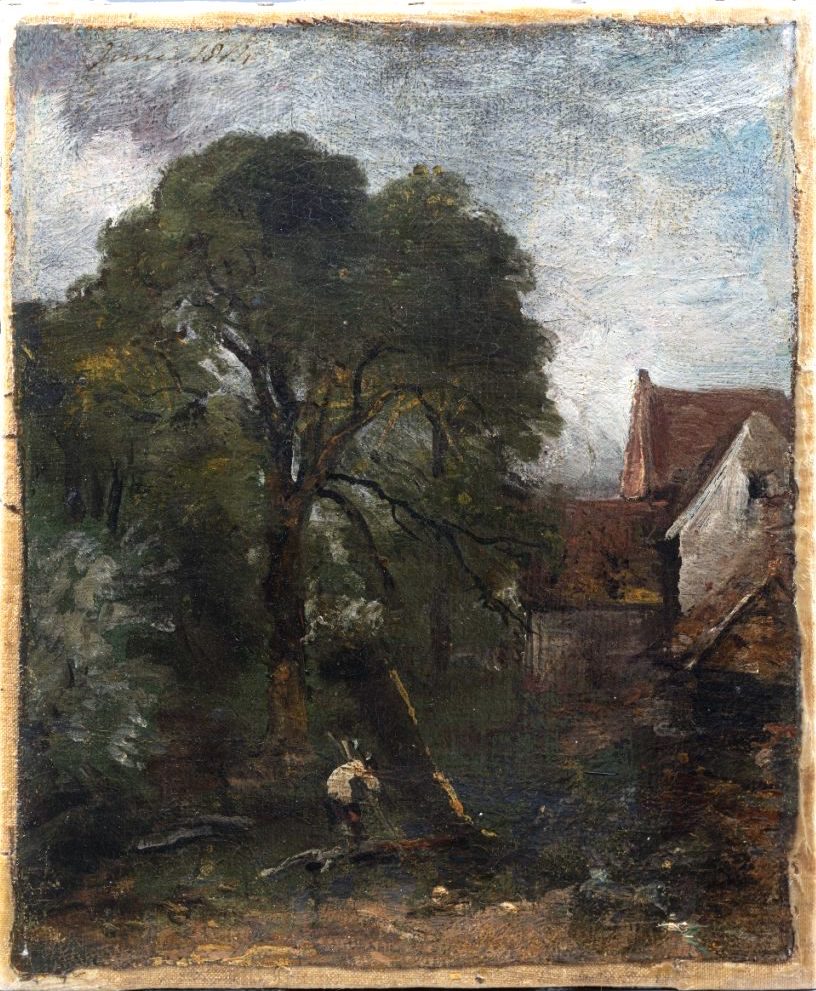
© » ARTLYST
about 25 months ago (09/28/2023)
An newly attributed oil sketch by the renowned 19th-century English landscape painter John Constable has gone under the hammer in Guernsey...

© » BOMB
about 25 months ago (09/15/2023)
BOMB Magazine | John Cotter Interviewed Necessary (Required) Cookies that the site cannot function properly without...

© » LARRY'S LIST
about 35 months ago (12/01/2022)
John Waters on How He Built His Art Collectionâand Then Gave It Away - via artnet news...
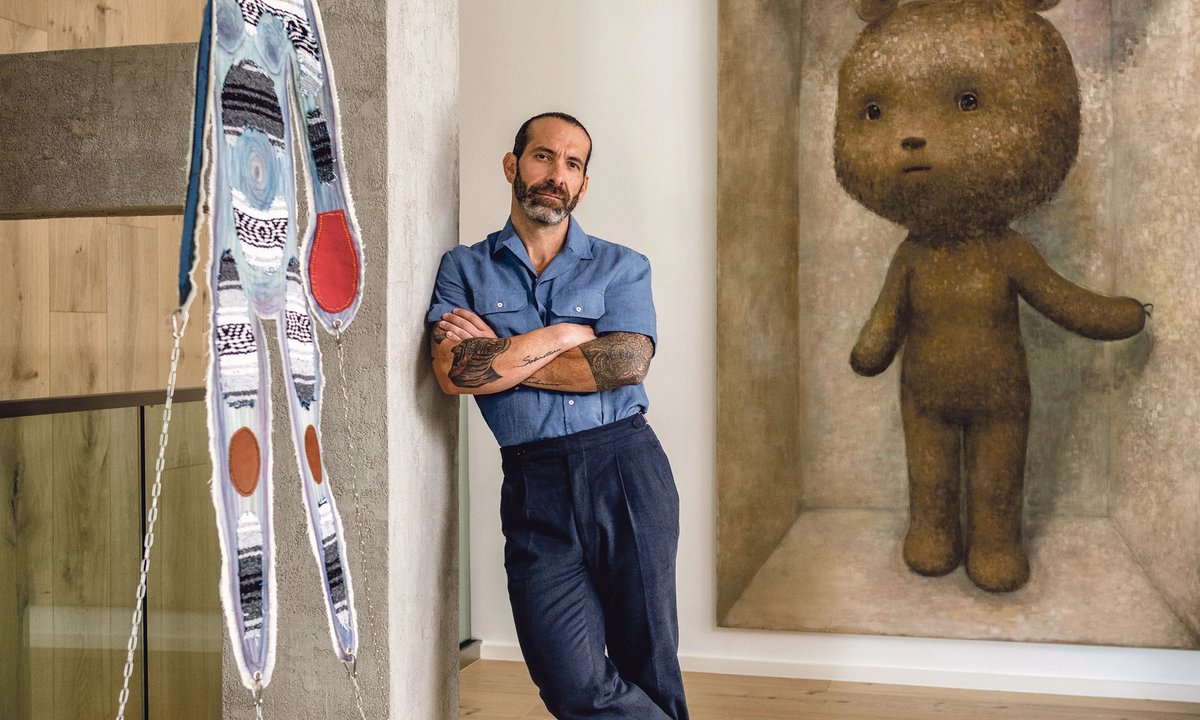
© » LARRY'S LIST
about 37 months ago (10/05/2022)
Collector's Eye: John Marquez - via The Art Newspaper...

© » LARRY'S LIST
about 37 months ago (10/05/2022)
City-proud cultural polymath John Waters has bequeathed 375 artworks and objects from his fine-art collection to the Baltimore Museum of Art (BMA), the institution announced yesterday...

© » LARRY'S LIST
about 37 months ago (10/05/2022)
Richardson, whose collection is headed to the auction block, lived an exceptional life that intersected with many of the great artists of his time....

© » LARRY'S LIST
about 37 months ago (10/05/2022)
He purchased and expanded Babcock Galleries, New York’s oldest art seller, while building a renowned pottery collection...

© » LARRY'S LIST
about 37 months ago (10/05/2022)
Collectorâs Eye: Amy and John Phelan - via The Art Newspaper...

© » LARRY'S LIST
about 37 months ago (10/05/2022)
John Sainsbury, Supermarket Magnate Who Transformed Londonâs Museums, Dies at 94 - via ARTnews...

© » LARRY'S LIST
about 37 months ago (10/05/2022)
The Baltimore Museum of Art (BMA) yesterday announced five new board trustees, only one of whom will have a bathroom named after him at the institution...

© » LARRY'S LIST
about 37 months ago (10/05/2022)
John Oliver Is Sending His Profoundly Weird Art Collection on Tour to Museums Across the U.S...

© » LARRY'S LIST
about 37 months ago (10/05/2022)
Among the artists he collected were John Baldessari, Marcel Broodthaers, stanley brouwn, Donald Judd, On Kawara, and Joseph Kosuth....

© » LARRY'S LIST
about 37 months ago (10/05/2022)
A Bansky Collector Is Scrapping Plans for a Street Art Museumâand Blaming It on a Welsh Townâs Council - via artnet news...

© » LARRY'S LIST
about 37 months ago (10/05/2022)
“Sally” and “John” started buying art in the 1980s, building up a significant collection...

© » LARRY'S LIST
about 37 months ago (10/05/2022)
John Schaeffer was known for buying, selling and collecting some of the most valuable artwork to enter Australia, including a number of pre-Raphaelite pieces....

© » LARRY'S LIST
about 37 months ago (10/05/2022)
A Banksy Mega-Collector Just Bought the Mural of a Girl With a Hula Hoop That Appeared in Nottingham Last Year - via artnet news...

© » LARRY'S LIST
about 37 months ago (10/05/2022)
The Sydney restaurateur will auction nearly 170 works by artists such as John Olsen and Charles Blackman - but there are some he can’t bear to part with....
© » LARRY'S LIST
about 37 months ago (10/05/2022)
Businessman Ben Dunne is selling 39 paintings from his personal art collection, including John Lavery’s Sketch for Pro-Cathedral, Dublin 1922 — the iconic painting of the funeral of Michael Collins, who was shot dead a century ago tomorrow....

© » HIGH FRUCTOSE
about 70 months ago (01/17/2020)
In John Jacobsmeyer’s parallel reality, pop culture and art history collide with the backdrops of his suburban youth...
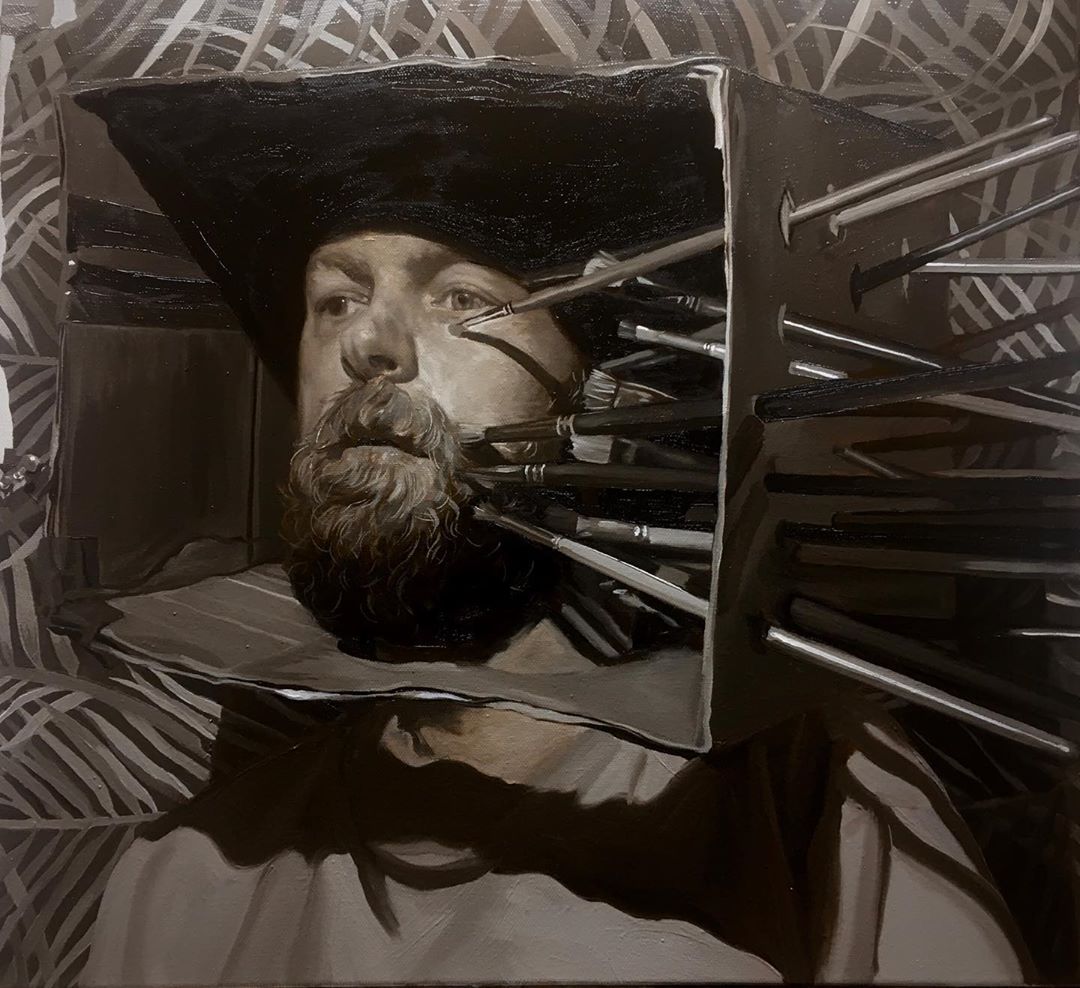
© » HIGH FRUCTOSE
about 71 months ago (11/30/2019)
Oil painter and performance artist John Robinson crafts cerebral, wistful, and, at times, humorous self-portraits...
-
1940-1949
John Gutmann
1947Gutmann’s photographs Untitled Nob Hill and From the North Tower of the Golden Gate Bridge are some of the oldest pieces in the Kadist Collection and serve as historical anchors for many of the more recent works...
-
1970-1979
Allan Sekula
1973San Pedro is a seaside city, part of the Los Angeles Harbor, sitting on the edge of a channel...
Larry Bell
Drawing & Print
1979(Drawing & Print) Like many of Larry Bell’s works, VFGY9 deals primarily with the viewer’s experience of sight...
-
1980-1989
Charles Gaines
1980To make his series Shadows (1980), Gaines subjected 20 potted plants to a uniform procedure...
Edward Kienholz
1984Untitled (San Francisco) was made in Idaho in 1984 and was facetiously dedicated to Henry Hopkins, the then director of the San Francisco Museum of Art who added “modern” to its name...
-
1990-1999
John Baldessari
Drawing & Print
1991(Drawing & Print) The voids in Baldessari’s painted photographs are simultaneously positive and negative spaces, both additive and subtractive...
John Wood and Paul Harrison
1996One of John Wood and Paul Harrison’s earliest works, Device features Harrison performing a series of actions, assisted by the titular ‘devices’, that use physics to force his body into unusual and uncomfortable positions...
John Baldessari
1997In One Must , an image of a pair of scissors, accompanied by the words of work’s title, poses an ominous question about the relationship between the image and the text...
John Wood and Paul Harrison
19973-Legged is an early video work by John Wood and Paul Harrison in which they appear with their legs tied together (as one would do in a three-legged race)...
-
2000-2009
Kota Ezawa
2002The Simpson Verdict is a three-minute animation by Kota Ezawa that portrays the reading of the verdict during the OJ Simpson trial, known as the “most publicized” criminal trial in history...
John Isaacs
2004A child and dreamer my whole life long (broken tree) (2004) is a sculpture made of filler, wire, copper, oil paint, and wood depicting a tree just at it’s moment of breaking into half – one part alive with foliage and blooming branches and the other the crisp of the break exposed, with the trunk adhered solidly to a plinth...
Mario Garcia Torres
2004Mario Garcia Torres imagines cinematic devices to replay stories occasionally forgotten by Conceptual art...
John Menick
2006The theme of the end of the world, of the last man on earth, recurs in our literary and cinematographic culture and in our imaginary: “we had this dream before, the dream that we’re alone.” In The Secret Life of Things , the narrator presents himself as an enthusiast and expert on films announcing the end of the world and those staging someone waking up to discover that they are the only survivor on earth...
Joachim Koester
2006Physical and mental exploration have been founding elements in Joachim Koester’s research for several years...
Larry Bell
2007Untitled (Construction) recalls the series of glass cubes that gained Bell international recognition in the 1960s...
J. John Priola
2008Priola pays particular attention to otherwise unnoticed details in the cityscape, a quality that not only recurs throughout his oeuvre, but which also places his work in line with a strong tradition of California documentary photography...
Lars Laumann
2008Eija Riitta was born in 1954 in Liden, Sweden, and is “objectum-sexual.” Since June 17, 1979, her name is Eija Riitta Berliner Mauer taking the name of her husband, the Berlin Wall...
Thomas Kilpper
Drawing & Print
2009(Drawing & Print) These two images come from the series called “State of Control” which Kilpper made in the building formerly occupied by the Stasi in Berlin...
Thomas Kilpper
Drawing & Print
2009(Drawing & Print) These two images come from the series called “State of Control” which Kilpper made in the building formerly occupied by the Stasi in Berlin...
-
2010-2019
Orion Shepherd
Drawing & Print
2010(Drawing & Print) Ballad of the Unabomber Part I is a painting by Orion Shepherd that features several manila folders stacked in order according to their size, resting atop a grainy hardwood pattern...
Goldin+Senneby
2010In this installation, you are standing at the heart of a bicephalous space reflecting Goldin+Senneby’s main research led during their residency in Paris...
John Houck
2013Houck’s Peg and John was made as part of a series of photographic works that capture objects from the artist’s childhood...
John Houck
2013Untitled #242 is part of Houck’s Aggregates Series, which uses digital tools to manipulate chosen sets and pairs of colors, creating colorful index sheets, bathed in colors and lines...
John Houck
2013John Houck’s multi-layered photographic compositions immortalize nostalgic objects from the artist’s childhood, manipulated in the studio and in post-production into unreal still-life arrangements...
John Houck
2013Baby Shoes, Never Worn is part of photographer John Houck’s series of restrained still-life photographs capturing objects from his childhood...
John Houck
2013John Houck’s brown- , sienna- and golden-toned composition, Untitled #185, 65, 535 combinations of a 2×2 grid, 16 colors , features densely packed lines of color moving diagonally across the creased page...
Chris Huen Sin-Kan
2013Contrast to the bustling and unrelenting experience of a city such as Hong Kong, Chris Huen Sin Kan paints the tranquil interiors of his apartment, where he leads a modest and almost hermit-like life...
Scott Reeder
2013Reeder’s works often start with language—and his Pasta Paintings are no different...
Claudia Joskowicz
2014Los rastreadores is a two-channel video by Claudia Joskowicz narrating the story of a fictitious drug lord, Ernesto Suarez, whose character is based on the well-known Bolivian drug dealer, Roberto Suárez...
Kota Ezawa
2014Paint and Unpaint is an animation by Kota Ezawa based on a scene from a popular 1951 film by Hans Namuth featuring Jackson Pollock...
Sara Cwynar
Drawing & Print
2015(Drawing & Print) Sara Cwynar’s composite photographs of found objects and images court feelings of time passing...
John Gerrard
2016Flag (Thames) 2016 depicts a small section of the Thames River—one that is adjacent to the Palace of Westminster in London—as an algorithmic representation on an LED panel...
Corey McCorkle
2016Corey McCorkle’s 2016 installation Pendulum is developed around the Cavendish family and their role in importing bananas to Europe...
Miljohn Ruperto
2017Miljohn Ruperto’s research-based multidisciplinary practice often deals with possession, re-enactment, mythology and archives...
Kota Ezawa
2017The Crime of Art is an animation by Kota Ezawa that appropriates scenes from various popular Hollywood films featuring the theft of artworks: a Monet painting in The Thomas Crown Affair (1999), a Rembrandt in Entrapment (1999), a Cellini in How to Steal a Million (1966), and an emerald encrusted dagger in Topkapi (1964)...
John Lucas and Claudia Rankine
Drawing & Print
2018(Drawing & Print) Historically, blondeness has been a signifier for desirability and beauty, speaking to “purity” — the purity of whiteness — like no other bodily attribute except, perhaps, blue eyes...
-
2020-2029
Wong Wai Yin
2021Drawn from the widely circulated images of protests around the world in support of women rights and racial equality, the phrase I can’t believe we are still protesting is both the title of Wong Wai Yin’s photographic series and a reference to similar messages seen on protest signages...
Wong Wai Yin
2021Drawn from the widely circulated images of protests around the world in support of women rights and racial equality, the phrase I can’t believe we are still protesting is both the title of Wong Wai Yin’s photographic series and a reference to similar messages seen on protest signages...
Wong Wai Yin
2021Drawn from the widely circulated images of protests around the world in support of women rights and racial equality, the phrase I can’t believe we are still protesting is both the title of Wong Wai Yin’s photographic series and a reference to similar messages seen on protest signages...
Wong Wai Yin
2021Drawn from the widely circulated images of protests around the world in support of women rights and racial equality, the phrase I can’t believe we are still protesting is both the title of Wong Wai Yin’s photographic series and a reference to similar messages seen on protest signages...









